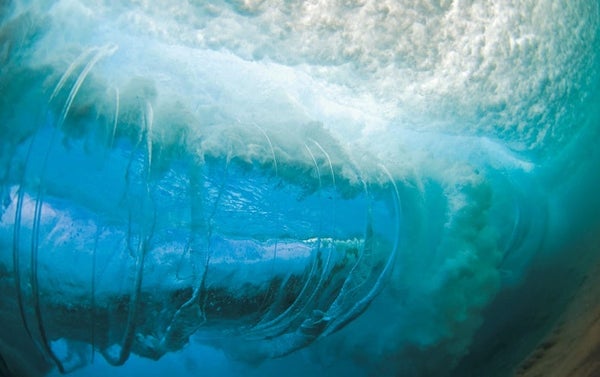These little-studied mini twisters form beautiful loops under the water’s surface
As an ocean wave coils, it creates a hollow tube made of spinning water. If you could peek under the surface, you would see numerous small, thin twisters known as rib vortices looping around this primary vortex. Scientists have only recently begun to investigate why and how these beautiful, delicate secondary eddies form.
“Basically there’s a separation that occurs,” says Christine Baker, a fluid mechanics researcher at the University of Washington. When a wave begins to break, tiny aerated regions along the leading edge cause a few streams to separate from the main vortex. These streams twist themselves into rib vortices as they pick up momentum.
“We often make the analogy of a figure skater,” says Jim Thomson, an oceanographer at the University of Washington. Initially a wave’s rib vortices are wide bands of water that twist slowly like figure skaters spinning with their arms outstretched. But as the wave travels forward, Thomson explains, its ribs corkscrew into thin filaments—an effect similar to when figure skaters tuck in their arms. “They rotate faster and faster,” he says. This rotation stretches the separation between the main vortex and its mini vortices as they loop and grow.